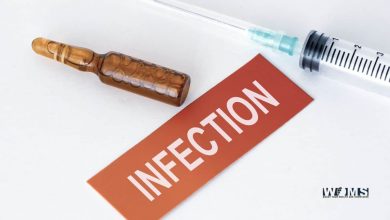How In-Home Caregivers Can Support Individuals Living with Cardiac Tamponade

Cardiac tamponade is a life-threatening condition characterized by the accumulation of fluid within the pericardial sac surrounding the heart. This buildup of fluid exerts pressure on the heart, hindering its ability to pump blood effectively. While immediate medical intervention is crucial, the road to recovery often requires ongoing care and support. In-home care assistance emerges as a vital component in the management of cardiac tamponade, providing patients with the necessary support to navigate the challenges of recovery and enhance their quality of life.
Understanding Cardiac Tamponade
To appreciate the role of in-home care, it is essential to comprehend the complexities of cardiac tamponade. The pericardial sac, a fibrous membrane encasing the heart, typically contains a small amount of fluid that lubricates the heart’s movement. However, in cardiac tamponade, an excess of fluid accumulates within this sac, compressing the heart chambers and impeding their ability to fill and pump blood adequately.
The causes of cardiac tamponade are diverse and can include trauma, infections, autoimmune disorders, and certain medical procedures. Symptoms of this condition often manifest as shortness of breath, chest pain, rapid breathing, and fatigue. In severe cases, individuals may experience dizziness, fainting, and low blood pressure.
Prompt medical intervention is crucial for managing cardiac tamponade. Emergency procedures such as pericardiocentesis, which involves draining the excess fluid, are often necessary to alleviate pressure on the heart and restore normal cardiac function. Once the immediate threat is addressed, patients embark on a recovery journey that frequently necessitates ongoing care and support.
The Indispensable Role of In-Home Care Assistance
In-home care assistance offers a comprehensive support system for individuals recovering from cardiac tamponade. By providing tailored care within the familiar environment of the patient’s home, caregivers contribute significantly to the patient’s physical, emotional, and psychological well-being.
Physical Care:
- Medication management: Adherence to prescribed medication regimens is paramount in managing cardiac tamponade. In-home caregivers play a pivotal role in ensuring that medications are administered correctly, on time, and as directed by healthcare providers. They can assist with pill organization, reminders, and monitoring for potential side effects or adverse reactions.
- Activity monitoring and pacing: Gradual resumption of physical activity is essential for cardiac rehabilitation. Caregivers help patients establish a safe and appropriate exercise routine, monitor for signs of overexertion, and provide encouragement and support throughout the process.
- Vital signs monitoring: Regular monitoring of vital signs, including blood pressure, heart rate, respiratory rate, and oxygen saturation, is crucial for detecting any changes that might indicate complications. Caregivers can be trained to accurately measure and record vital signs, reporting any abnormalities promptly to the medical team.
- Personal care assistance: Depending on the patient’s needs, caregivers may provide assistance with activities of daily living such as bathing, dressing, grooming, and mobility. This support ensures the patient’s comfort, independence, and overall well-being.
Emotional and Psychological Support:
- Companionship and emotional support: The experience of cardiac tamponade can be emotionally taxing for patients and their families. In-home caregivers offer companionship, provide a listening ear, and create a supportive environment to help patients cope with anxiety, fear, and uncertainty.
- Stress management: Chronic stress can negatively impact heart health. Caregivers can introduce relaxation techniques such as deep breathing, meditation, or gentle yoga to help patients manage stress and promote emotional well-being.
- Communication and advocacy: Effective communication with healthcare providers is essential for optimal care. Caregivers can facilitate communication between patients and medical professionals, advocate for the patient’s needs, and ensure that the patient’s voice is heard.
Practical Support:
- Home safety: Creating a safe home environment is crucial for cardiac tamponade patients. Caregivers can assess the home for potential hazards, remove tripping risks, and install necessary safety equipment to prevent falls and injuries.
- Meal preparation and nutrition: A heart-healthy diet is essential for cardiac recovery. Caregivers can assist with meal planning, grocery shopping, and preparing nutritious meals that align with dietary recommendations.
- Appointment scheduling and transportation: Managing medical appointments and transportation can be overwhelming for patients. Caregivers can handle these logistical tasks, ensuring timely attendance at appointments and reducing stress for the patient.
- Respite care: Caregivers often experience physical and emotional exhaustion. In-home care agencies can provide respite care, allowing family caregivers to take breaks, recharge, and prevent burnout.
Essential Qualifications and Training for In-Home Caregivers
To provide high-quality care for individuals with cardiac tamponade, caregivers require specific skills and training:
- Basic first aid and CPR certification: This is essential for responding to emergencies and providing immediate life-saving interventions.
- Medication administration training: Caregivers should be proficient in administering medications accurately and safely, following prescribed dosages and guidelines.
- Symptom recognition and reporting: The ability to identify potential complications and report them promptly to healthcare providers is crucial for timely intervention.
- Communication and interpersonal skills: Effective communication with patients, family members, and healthcare professionals is essential for building trust and ensuring coordinated care.
- Patience and empathy: Understanding the patient’s emotional and physical challenges and providing compassionate support is vital for a positive caregiving experience.
- Physical fitness: Depending on the patient’s needs, caregivers may need to assist with physical activities, requiring a certain level of physical capability.
Building a Collaborative Care Team
Effective in-home care for cardiac tamponade patients requires a collaborative approach involving the patient, caregivers, and healthcare providers. Open communication, shared goals, and a coordinated care plan are essential for optimizing patient outcomes.
Caregivers should maintain regular communication with the patient’s healthcare team, providing updates on the patient’s condition, medication adherence, and any changes in symptoms. They should also encourage patients to attend follow-up appointments and adhere to prescribed treatment plans.
Enhancing Quality of Life
In-home care assistance empowers individuals with cardiac tamponade to regain independence, manage their condition effectively, and improve their overall quality of life. By providing physical, emotional, and practical support, caregivers create a nurturing environment that fosters recovery and promotes a sense of well-being. While cardiac tamponade presents significant challenges, with the support of in-home caregivers, patients can navigate their recovery journey with confidence and hope. By prioritizing patient-centered care, focusing on individual needs, and fostering a collaborative care team, in-home care services can make a profound difference in the lives of individuals living with cardiac tamponade.




